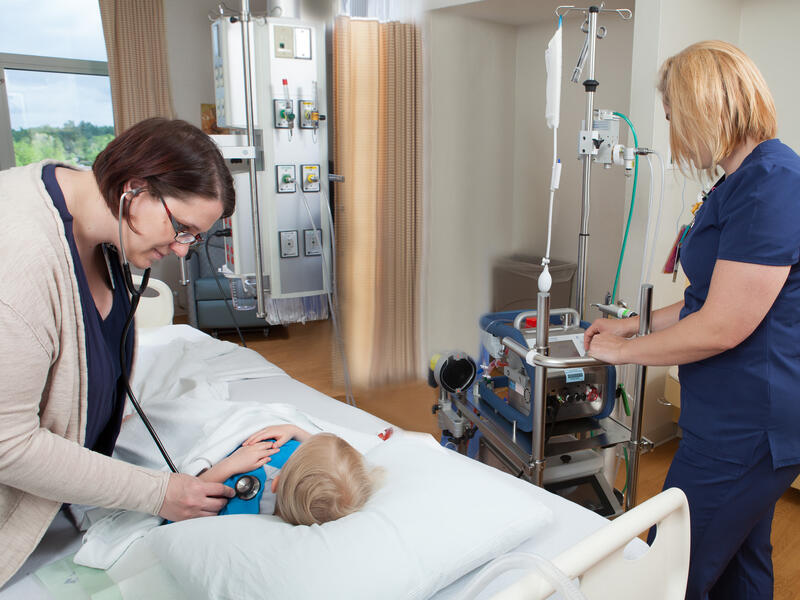After a motorcycle accident in October left 21-year-old DJ Veldkamp clinging to life, he was rushed by ambulance to Sanford USD Medical Center in Sioux Falls, South Dakota, where he spent the next day in the intensive care unit.
As the hours went on, his health was rapidly declining. His traumatic chest injuries weren’t allowing his lungs to respond to traditional treatment. A decision had to be made.
DJ’s family didn’t realize the extent of his chest injuries, but soon found out how critical his condition was and how the medical team needed to act fast.
“Because of his age and size, we could take him to the pediatric ICU to do the ECMO,” says Lesta Whalen, M.D., medical director of the ECMO program at Sanford Children’s Hospital.
ECMO saves lives close to home
Sanford Children’s is the only hospital in the region that offers life-saving ECMO services. Patients can be on ECMO for a few days, a few weeks, or, in rare cases, up to one year.
“If they did not do ECMO, he had a 50% chance of survival. That’s an immediate decision,” said DJ’s mom, Nona Veldkamp.
ECMO stands for extracorporeal membrane oxygenation. It is a heart-lung bypass machine that pumps and oxygenates a person’s blood outside of their body, allowing their heart and lungs to rest and heal after a trauma or life-threatening illness.
For DJ, it was the machine that would save his life.
Nona had heard of ECMO, but didn’t know how aggressively it works. Dr. Whalen and her team explained the benefits and how it can be used to treat patients 30 years of age and younger.
DJ was hooked up to the ECMO machine for five days. He was sedated during that time so it could do its job and allow his lungs to rest.
“It’s an incredible machine. It controls pretty much everything. It was amazing how much control it had of his body,” Nona said.
“He had a short time on ECMO, which was good to see,” Dr. Whalen said. “He recovered on a nice timeline.”
DJ was transferred back to the adult ICU where his health continued to improve.
“They removed the vent and it was just incredible how fast he recovered,” Nona said.
ECMO team happy with healing
At that point, one of the hardest things for DJ was coming off of the sedation.
“When he first woke up and we told him what had happened, it was kind of unbelievable to him because to be out for 10 days and not know where he’d been was hard to imagine,” said Nona. “He’d grown a lot of facial hair, so reality kind of kicked in.”
DJ had a hard time comprehending that he was hooked up to machines in the ICU with bandages on his injuries.
“I was just really confused. I don’t remember anything from that workday, getting on my bike or anything,” DJ said.
As the reality of his accident set in, DJ focused on continuing to recover. It only took him a day and a half of doing physical therapy before he passed his tests and was sent home.
The family made sure to stop at the pediatric unit to talk to the medical team who had helped DJ. The team showed him the ECMO and how it worked.
“To see their reaction to how fast he was healing and recovering, that was cool,” Nona said.
ECMO gave DJ a second chance at life. His family is thankful that it was available at Sanford because Dr. Whalen said it would have been dangerous for DJ to take a flight to a different city to receive ECMO services. Instead, he got to stay in his hometown of Sioux Falls.
If he hadn’t received ECMO, he may have survived, but his lungs would have been irreparably damaged from ventilator use. He would have come out of the hospital needing to use oxygen long-term.
As the months go on, DJ continues to experience pain in his ribs, but he resolves to get his life back to normal. He says he’ll probably even ride a motorcycle again someday.
Learn more
- What we’ve learned about hybrid immunity, long COVID
- Sanford Children’s Hospital: A Castle of Care
- ‘Miracle child’ in Minnesota survives tractor accident
…
Posted In Children's, Emergency Medicine, Sioux Falls
